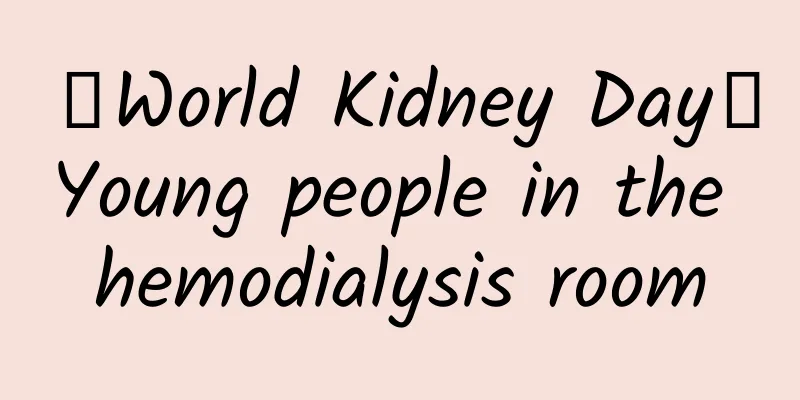A complete analysis of the methods and precautions for orthodontic treatment of children of different ages

|
1. Orthodontic methods for preschool children 1.1 Initial observation and prevention During the preschool period (0-6 years old), parents should pay close attention to their children's dental development. At this time, the main tasks are observation and prevention to ensure that the deciduous teeth erupt on time and normally. Parents should take their children for regular dental examinations to detect any early signs of abnormal tooth arrangement in time. 1.2 Early intervention For some obvious tooth crookedness problems, such as an underbite, early intervention may be necessary. Intervention at this stage usually includes simple braces or behavioral guidance to avoid bad habits such as nail biting or excessive thumb sucking. 2. Orthodontics for primary school children 2.1 Management of mixed dentition The primary school stage (7-12 years old) belongs to the mixed dentition period, with both deciduous and permanent teeth. This is a critical period for orthodontic treatment because permanent teeth are gradually replacing deciduous teeth. 2.2 Functional appliances At this stage, functional appliances can be used to correct jaw development problems such as crossbite (underbite) or maxillary protrusion. These devices improve tooth alignment by guiding the correct growth of the jaw. 2.3 Use of fixed appliances Fixed appliances, such as traditional metal brackets or self-ligating brackets, may also be used at this age. These appliances help adjust the alignment and bite of the teeth and ensure that the permanent teeth erupt correctly. 3. Teeth correction methods for teenagers 3.1 Widespread use of fixed appliances When entering adolescence (13-18 years old), most permanent teeth have erupted, which is the best time for fixed orthodontic treatment. Metal brackets, self-ligating brackets and ceramic brackets are all common choices that can effectively correct complex tooth alignment problems. 3.2 Invisible braces Invisible braces have become an increasingly popular choice in recent years, especially among teenagers. They provide an aesthetically pleasing appearance, do not interfere with daily life and social activities, and can effectively correct the position of teeth. 3.3 The importance of the maintainer Regardless of the correction method used, you will need to wear a retainer after the treatment is completed to maintain the correction effect and prevent the teeth from returning to their original position. 4. Common precautions for orthodontics 4.1 Regular review During the orthodontic process, regular follow-up is the key to ensuring effective treatment. The dentist will adjust the treatment plan based on the progress to ensure the best results. 4.2 Oral Hygiene It is very important to maintain good oral hygiene when wearing braces. Parents and children should pay attention to using a proper toothbrush and dental floss to prevent tooth decay and gingivitis. 4.3 Dietary considerations Avoid eating hard or sticky foods to prevent damage to the braces. At the same time, you should reduce sugar intake to protect your teeth. 5. Frequently Asked Questions about Children’s Orthodontics 1. What is the best age for children to have orthodontic treatment? It is usually recommended to start examinations around the age of 7. This is because permanent teeth begin to erupt at this time, which is the best time to detect potential problems. 2. Are there any problems with my deciduous teeth that require correction? Yes, in some cases problems with deciduous teeth may affect the growth of permanent teeth, and early correction can prevent more serious problems. 3. How long does the correction take? The correction time varies according to individual differences, usually between 6 months and 2 years. 4. What should I do if my child doesn’t want to wear braces? Parents should communicate with their children about the importance of correction and can choose more comfortable braces such as invisible braces. 5. Will orthodontic treatment be painful? There may be some mild discomfort for a few days after the adjustment, but it is generally not painful. 6. How much does orthodontic treatment cost? Costs vary by region and type of appliance, and parents can consult multiple dental offices to make comparisons. 7. What should I do if the brace is damaged? Contact a dentist in time for repair to avoid affecting the correction effect. 8. Can I engage in physical activities during the correction period? Yes, but wearing a mouthguard is recommended to prevent accidental damage. 9. Will orthodontic treatment affect my pronunciation? There may be some mild discomfort at first, but people usually get used to it quickly. 10. Is it necessary to extract the tooth? In some cases, tooth extraction may be necessary to provide space, which needs to be evaluated by the doctor. 11. Will the teeth become misaligned again after correction? Proper use of retainers can prevent re-dislocation. 12. When is a functional appliance needed? When the jaw develops abnormally, functional appliances can be effective in making adjustments. 13. Are invisible aligners suitable for all teenagers? Invisible braces are suitable for most cases, but they need to be evaluated based on the specific dental condition. 14. How to handle emergencies during the correction process? In the event of an emergency, such as a damaged appliance, you should contact your dentist as soon as possible. 15. Can I adjust the braces myself? No, any adjustments should be made by a professional doctor. 16. Will orthodontic treatment affect my daily diet? You need to pay attention to the type of food you eat and avoid hard foods. 17. Will orthodontic treatment change my facial contour? Correct correction may improve facial contours and enhance aesthetics. 18. Can I choose brackets in different colors? Many aligners come in a variety of color options for added fun. 19. How long does it take to see results from orthodontic treatment? Initial results are usually seen within a few months. 20. How long do I need to wear the retainer? The exact time varies from individual to individual, but usually takes several months to a year. 21. Do I need to take X-rays regularly? Regular x-rays are taken to help monitor progress. 22. Will wearing braces cause my teeth to discolor? Good oral hygiene can reduce the risk of discoloration. 23. Under what circumstances is surgical correction necessary? Severe jaw problems may require surgery to correct them. 24. Can children choose the type of braces themselves? The choice should be made under professional advice. 25. How to ensure long-lasting results after correction? Wear your retainer regularly and have regular checkups. Through proper orthodontic treatment, children can have healthy and beautiful teeth, thus improving their quality of life and self-confidence. Parents should pay close attention to tooth development and take appropriate corrective measures in a timely manner. |
<<: There are many different types of myopia surgery methods. Which one is better?
>>: Does your Parkinson's disease need surgery? Mainly judge from these 4 aspects
Recommend
Introduction to autologous fat breast augmentation surgery
Some girls are always insecure about their figure...
Why do we spread wood ash when planting? How to apply wood ash when planting ginger?
Wood ash is the ash left after burning firewood. ...
Why do girls always have cold knees?
Girls always feel cold easily in winter, especial...
Under what circumstances will ovulation be early
Only when women have normal and healthy ovulation...
What are the anti-aging methods for women?
There are many ways for women to fight against ag...
Treatment of white spots on female vulva
Gynecological diseases are very harmful to women&...
What to do if the uterus and abdominal cavity are adhered?
For women, the most vulnerable part is the abdome...
What to do if you have excessive menstrual bleeding
Menstruation is an important physiological phenom...
Do fifty-year-old women still have sex?
Women in their fifties still have sexual needs, m...
What is the city flower of Lhasa? Which month is the best to visit Lhasa?
Tibet has different scenery to see all year round...
Why should I check HPV for cervical erosion?
In general, women are more likely to develop gyne...
Is it necessary to take the 4-valent HPV vaccine?
Among various diseases that threaten women's ...
When will milk dates be available? Do milk dates have a high sugar content?
Milk dates are rich in nutrients and are a rare d...
What is the cause of a small amount of vaginal bleeding?
The vagina is a female reproductive organ and is ...









